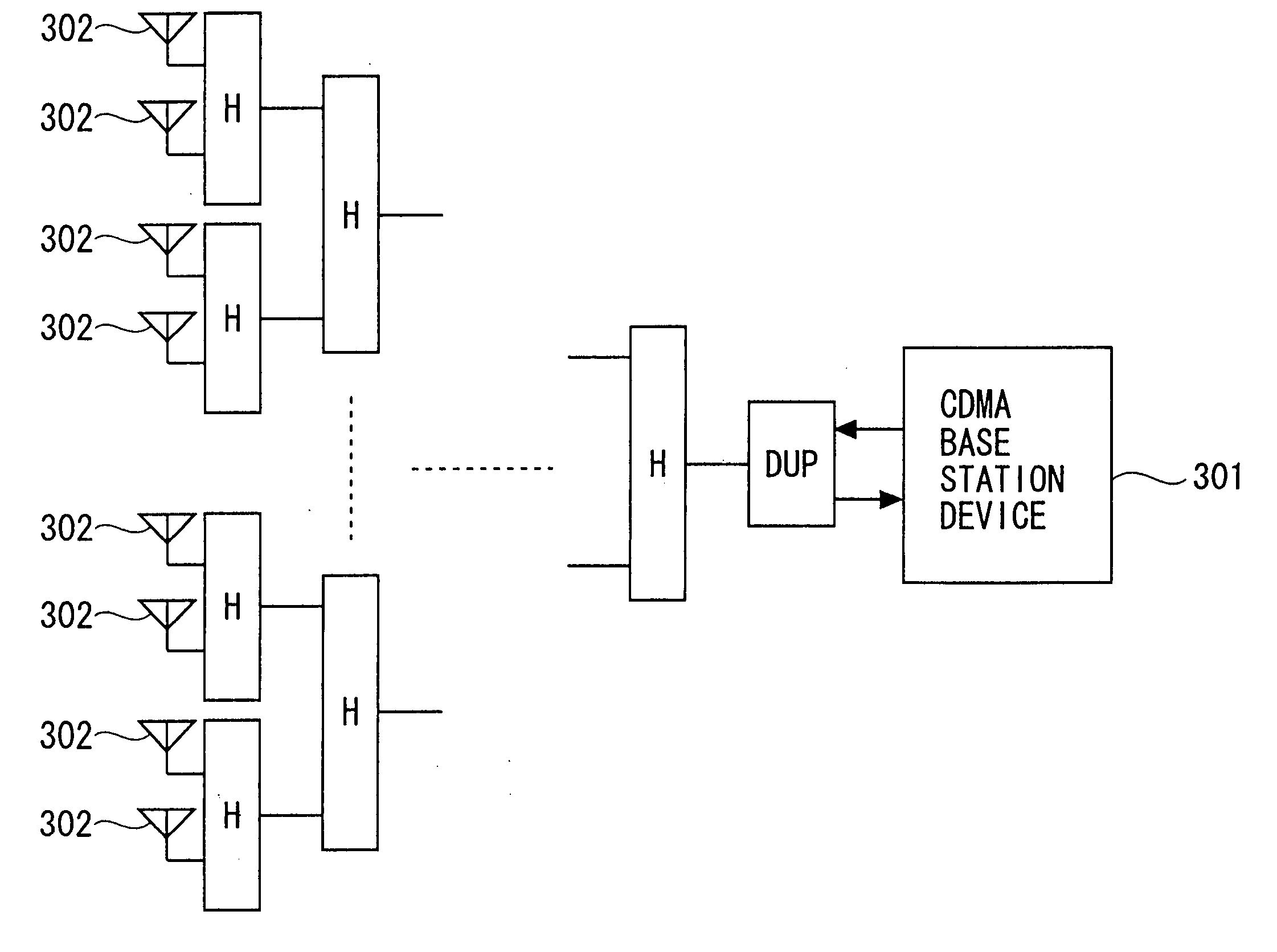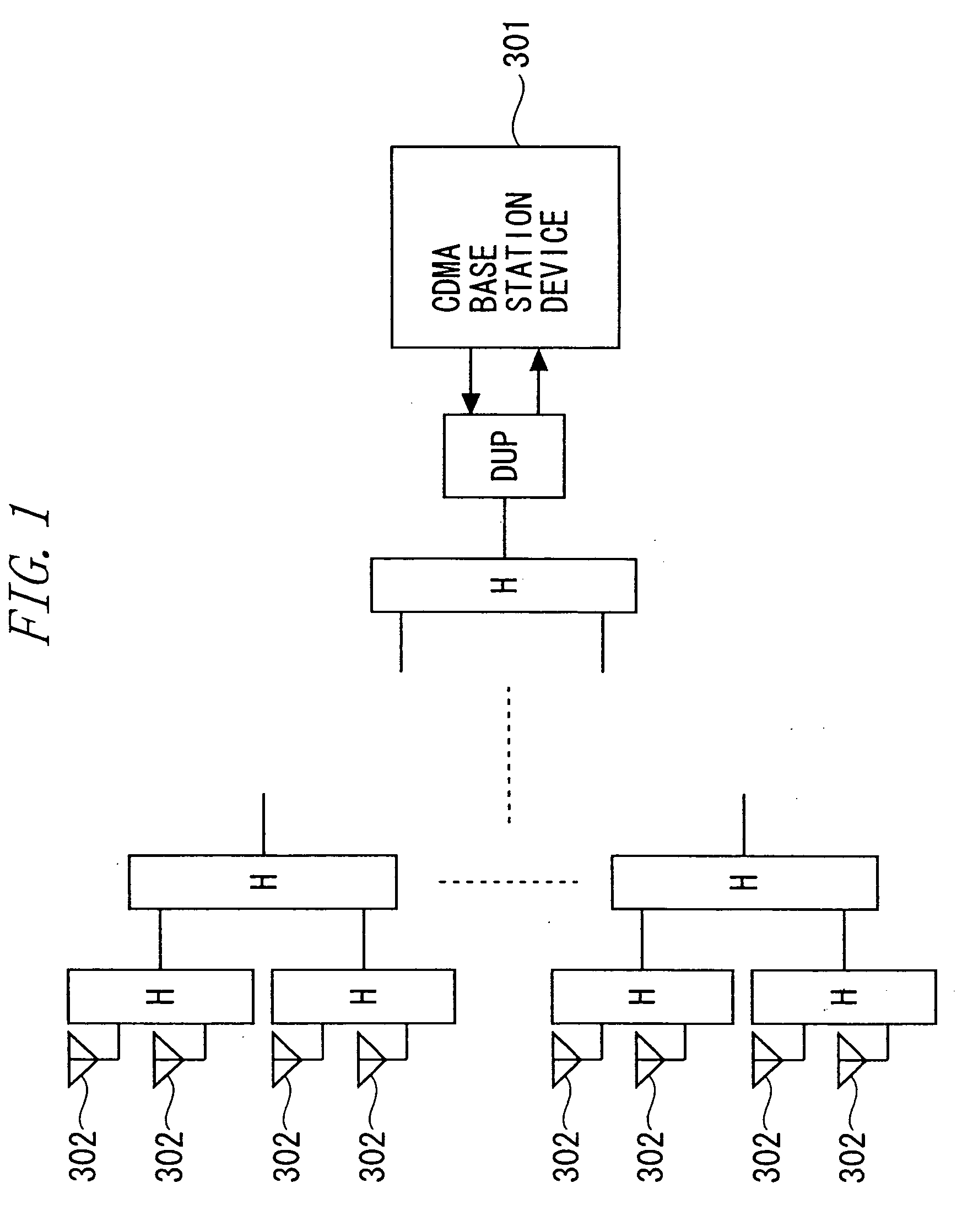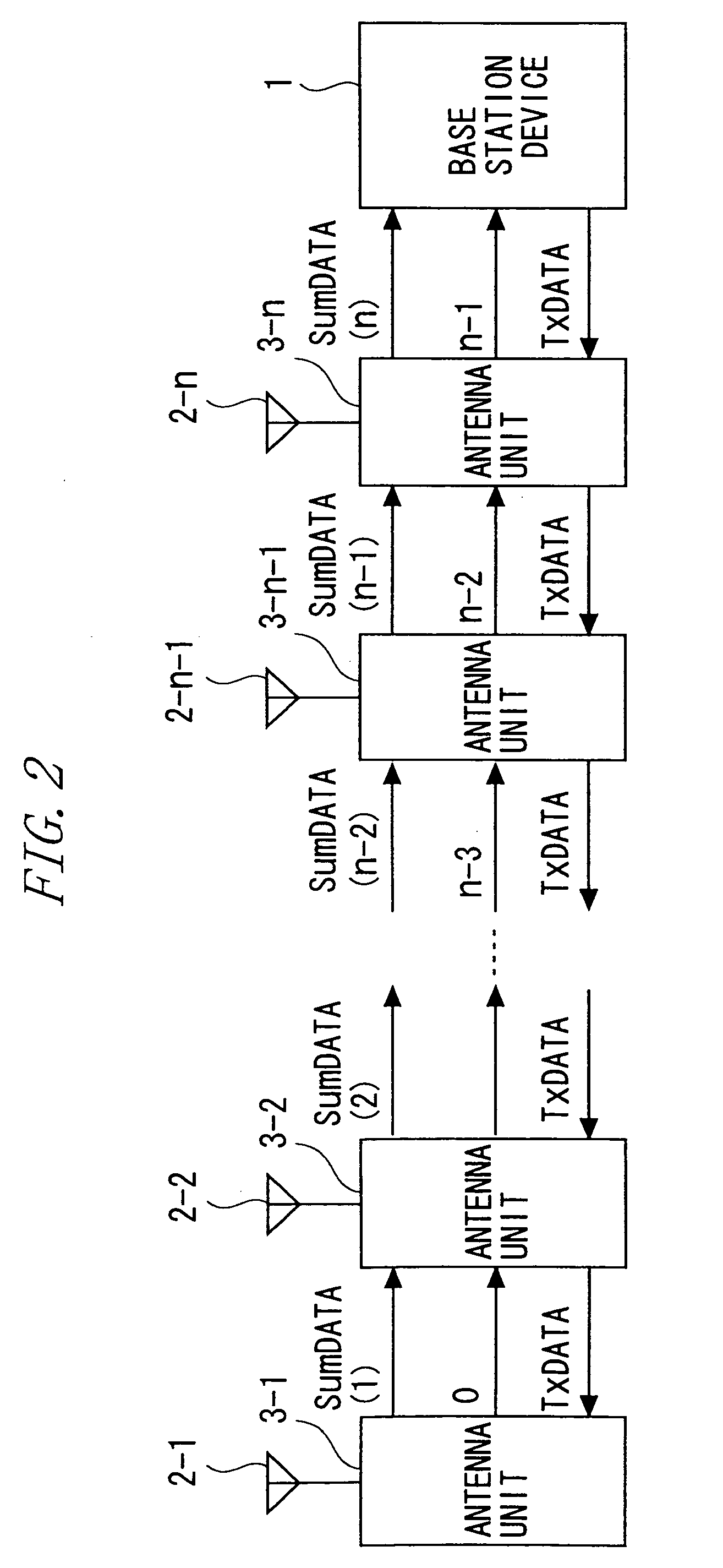Multi-antenna system and antenna unit
- Summary
- Abstract
- Description
- Claims
- Application Information
AI Technical Summary
Benefits of technology
Problems solved by technology
Method used
Image
Examples
first embodiment
[0080] Hereinafter, a radio communication base station system (simply referred to as a base station system, hereinafter) according to a first embodiment of the present invention will be described with reference to FIGS. 2 to 4. According to this embodiment, the base station system is realized by combining a plurality of signal processing units called antenna units.
Connection Example
[0081]FIG. 2 shows a connection example of the antenna units of this base station system. As shown in FIG. 2, according to this embodiment, this base station system includes a base station device 1, antenna units 3-1, 3-2, . . . , 3-n (antenna units 3-1 and the like, hereinafter) linearly connected from the base station device 1, and antennas 2-1, 2-2, . . . , 2-n connected to the antenna units 3-1 and the like to transmit / receive radio signals.
[0082] In FIG. 2, a direction toward the base station device 1 is called an uplink direction (equivalent to a second direction). Additionally, in FIG. 2, a dire...
second embodiment
[0121] Hereinafter, a second embodiment of the present invention will be described with reference to FIGS. 5 to 8. The first embodiment has shown the configuration of the base station system where the plurality of antenna units 3-1 to 3-n are linearly connected. This embodiment will be described by way of a base station system where a plurality of antenna units are connected by being branched in a tree form. Other components and operations are similar to those of the base station system of the first embodiment. Thus, components similar to those of the first embodiment are denoted by similar reference symbols, and description thereof will be omitted. When necessary, reference will be made to FIGS. 2 to 4.
[0122]FIG. 5 shows a connection example of antenna units in the base station system. As shown in FIG. 5, according to this embodiment, the base station system includes a base station device 1, addition processing units 50 branched in a tree form from the base station device 1, and a...
third embodiment
[0134] Hereinafter, a third embodiment of the present invention will be described with reference to FIGS. 9 and 10. The first embodiment has shown the configuration of the base station system where the plurality of antenna units 3-1 to 3-n are linearly connected. The digital added value (added digital data SumDATA) of the reception signals from the antenna units 3-1 to 3-n and the total number of connected antennas (number of connected antennas N_DATA) are transmitted to the base station device 1. Further, the base station device 1 calculates the average of the reception digital data based on the added digital data SumDATA and the number of connected antennas N_DATA, and performs digital quadrature demodulation.
[0135] This embodiment will be described by way of example of implementing average calculation of reception digital data in each antenna unit. Other components and operations are similar to those of the first embodiment. Thus, components similar to those of the first embodim...
PUM
 Login to View More
Login to View More Abstract
Description
Claims
Application Information
 Login to View More
Login to View More - R&D
- Intellectual Property
- Life Sciences
- Materials
- Tech Scout
- Unparalleled Data Quality
- Higher Quality Content
- 60% Fewer Hallucinations
Browse by: Latest US Patents, China's latest patents, Technical Efficacy Thesaurus, Application Domain, Technology Topic, Popular Technical Reports.
© 2025 PatSnap. All rights reserved.Legal|Privacy policy|Modern Slavery Act Transparency Statement|Sitemap|About US| Contact US: help@patsnap.com



